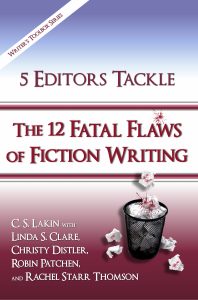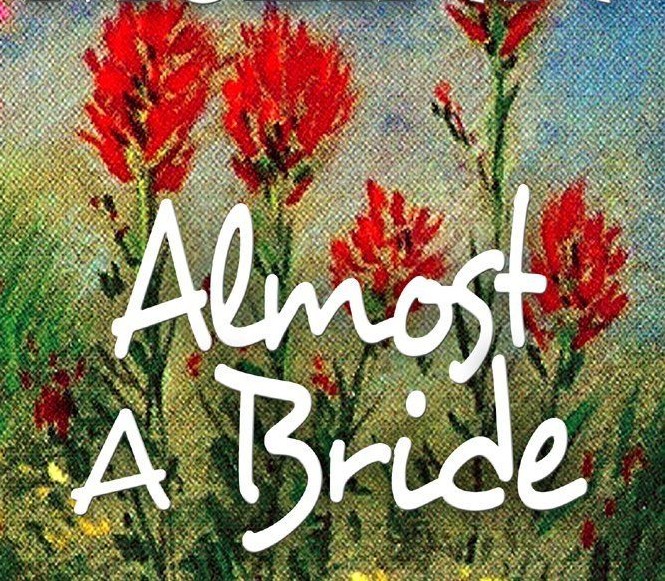First Pages of Best-Selling Novels: Almost a Bride
This week, in our examination of first pages of best-selling novels, we’re taking a look at Patricia McLinn’s novel Almost a Bride (released 2014). If you’ve been following these weekly forays into best-sellers’ first pages, you’ll have noticed how these writers have done a great job making sure they’ve included what’s important on a first page.
We’re using my first-page checklist to go through these first pages to see the ways they effectively draw the reader quickly into the story. While novels don’t have to have every one of these checklist elements on the first page, usually the more they do have, the stronger the opening.
Since we’re looking at various genres, I hope you’re getting a feel for the differences in the prose. Genre is a key concern that every writer—whether of fiction or nonfiction—needs to pay attention to. Readers have expectations for books. If you state your book is a suspense thriller, that opening page (as well as the rest of the book) should fit the genre. It should reflect the mood, tone, writing style, sentence/scene/chapter style as is common with that genre.
How Genre Comes into Play
I can’t emphasize this enough. Too many writers structure books that seem to be in a particular genre, but these expected elements or styles are missing. This confuses readers. This is not to say you can’t cross or combine genres. It’s done all the time, and some of the books we’re looking at (for example, The Time Traveler’s Wife) are combinations of genre.
And while that’s fine, it’s more of a challenge for writers to make the best determinations for those elements. Suffice it to say, if you are clear about your genre, know the specific audience you are writing for, and know their expectations, you will have the best chance at success.
I’m not talking about being formulaic here. But think about it: if you go searching online for a book on how to build a doghouse or a sci-fi futuristic novel, you have some ideas in your mind as to what those kinds of books are going to be like. Being a successful author requires putting on a marketing hat to write and promote books to the readers who are searching for specific books.
 I’ve seen great successes with the hundreds of clients I’ve worked with. I’ve also seen a whole lot of failure. And this failure is often due to a lack of understanding what it means to target genre.
I’ve seen great successes with the hundreds of clients I’ve worked with. I’ve also seen a whole lot of failure. And this failure is often due to a lack of understanding what it means to target genre.
A writer might write well and have some great plot and concept ideas, even wonderful characters and a compelling setting. But if his novel isn’t carefully structured and written to fit a specific genre aimed at a specific audience, it often fails to get traction when published.
This was my downfall for decades, and the main reason I’ve put together my new online course: Targeting Genre for Big Sales (which you can read more about here).
Writers need to learn this well if they hope to see success for their books. If you sign up for my newsletter (click on the free ebook link on the right side bar), you’ll get a special coupon code for $100 off the course price (good through 3-31-16)!
So, keep this all in mind as you read today’s first page. Patricia McLinn writes perfectly to her genre. It may not be a genre you read or like, but that’s not the point as we dig into why this opening works. So without further delay, let’s dive in.
Chapter One
Matty Brennan’s plan to save the Flying W Ranch began forming even before she charged out of her lawyer’s office.
It exploded into full bloom in the instant her nose collided with Dave Currick’s collarbone.
A lot was jammed into that instant, since a particular corner of her mind also registered that the hands she’d instinctively put up to brace herself had discovered that Dave had an even nicer chest than she’d remembered.
“Off to a fire, Matty?”
Running into Dave had to be an omen, she thought as she recovered her equilibrium, straightened away from his chest, and rubbed her nose.
When Taylor Anne Larsen delivered the dire legal news—on top of the financial mess Matty had already discovered—there’d been one throat-closing, stomach-grinding moment when Matty had feared there might not be any way out.
Taylor had suggested selling some of the ranch—as if Matty would ever do that. She was the last of the Brennans, and she would not be the one who shredded the Flying W into splinters and flakes.
It wasn’t the lawyer’s fault for not understanding—she’d been raised in some suburb in Ohio. Of course, even some people right here in Knighton, Wyoming, didn’t share Matty’s feeling. There was only one person she knew for certainty would understand, and that was Dave—as soon as that thought had surfaced, she’d veered away from it like a rattlesnake in the middle of the room.
“I truly am sorry about the grant, Matty,” Talyor had said. “And I’m afraid there are more papers to sign for the estate now, too.”
If Great-Uncle Henry had had a grain of sense, the Flying W wouldn’t be encumbered with exorbitant inheritance taxes, not to mention the bank note coming due in two years. But the same optimism that had persuaded him no caution was needed in running a cattle ranch had also convinced him he had no need to bother with estate planning.
As Matty prepared to leave after her signing duties, Taylor held out a sheaf of papers. “These are the grant regulations. Maybe you’ll see something that will help for next year, if . . .”
If Matty Brennan still owned the Flying W.
Why This Works
So let’s go through the checklist elements and take a look at how this first page measures up.
Opening Hook: The author hooks the reader in the opening paragraphs, using immediate conflict and the introduction of the antagonist/romantic interest. The language used gives a sense of genre—Western romance and the word omen in reference to the romantic interest gives the reader a sense of their history and the idea that there’s likely a struggle to come.
Introduction of main character in first few lines: The protagonist is introduced in the first sentence; her romantic interest is introduced in the second sentence. Strong opening sentences that draw the reader in.
Starting the story in the middle of something that’s happened (or happening): The story begins in the middle of conflict. Matty threated with the loss of the Flying W Ranch. The name of the property alone gives the reader a sense of setting/genre. The author imparts this information in the first sentence.
A nod to setting; avoid excessive exposition or narrative: Throughout the first page, the author uses clever language to instill the sense of setting: “she would not be the one who shredded the Flying W into splinters and flakes.” And “she’d veered away from it like a rattlesnake in the middle of the room.”
A catalyst, inciting incident, or complication introduced for your character: Potential loss of her ranch and her need to figure out how to save it.
A hint at character’s immediate intentions: To fight for what is hers.
A hint at character’s hidden need, desire, goal, dream, fear: Fear of loss.
Unique voice/writing style: Voice and style aren’t necessarily unique, but they fit the genre.
Setting the tone for the book: Well done—by paragraph 3, we have a strong hint that this will be a romance with complications. In the midst of her emotional upheaval, the protagonist is distracted by the nice chest of the man she bumps into.
A glimpse at character’s personal history, personality—shed light on motivation: The reader knows immediately that Matty is determined and strong. She’s a fighter.
Hint of character’s initial plot goal: Very clear: save the ranch.
A course of action/decision implied. Introduction of high stakes/dramatic tension: Threat of loss of something important to Matty—her family ranch.
Good pacing; jump right into present action. No backstory: The backstory is a bit much (which I’ll discuss below), and interrupts the present action too much, too soon.
- One characteristic to reveal that makes your character heroic and vulnerable: The reader will sense Matty’s strength, but the circumstances, the potential loss, leave her vulnerable.
- One element of mystery, something hinted at that raises curiosity: Who is Dave Currick, beyond being the guy with the nice chest? And why does Matty veer away from him as if he’s a rattlesnake?
- One element out of the ordinary, unusual, that makes the book different/stand out: Nothing necessarily unique comes through in the first page. Feels like a genre/formulaic read.
- Concise, catchy dialogue (if in the first scene) that is not boring or predictable:Minimal dialogue in first page/paragraphs and one question the protagonist doesn’t respond to, which stopped me. I wanted to hear her engage with Dave, or at least answer his question.
- A hint at theme: Possibly the importance of saving a legacy, fighting for what you believe in, regardless of cost. Potential, at least, for some themes here.
What Could Have Been Better
As I mentioned earlier, it’s all about genre. This novel i a great example of writing to genre. The tone, writing style, choice of words, and the quick elements of hinted romance all work well. I chose this novel because of this point.
However, I find a lot of things bothersome in this opening page, but they’re mostly minor and writing issues. First off, I found the imagery of a plan “exploding into full bloom” a bit of a mixed metaphor. Flower bloom; they don’t explode (except maybe poetically). It feels like hyperbole. She doesn’t act like someone who’s plan has exploded. It’s fine we don’t know what that plan is, and we see how passionate she is about her ranch, which is great.
I had the same problem with the image of the ranch “shredding” into “splinters and flakes.” Those two items don’t shred. I would have preferred the ranch “splintering” or “shredded to bits.” Again, a bit of mixed metaphor that only makes the author seem a little confused or (dare I say it?) not thinking carefully about her choice of words.
The Problem with Backstory
The biggest problem, which I would ding any writing client of mine on, is the lapse into the long backstory passage about the lawyer. Matty runs into Dave, thinks it’s an omen, and suddenly we’re back in the lawyer’s office with a scene that really isn’t important to put on page 1.
Backstory is a real problem with novels, and putting a backstory dump in the first scene (or the first fifty pages) is not a great idea. Sure, it can be done well and effectively, but if you can avoid it, do so. If the author here felt that scene in the lawyer’s office was important to show, she should have started the novel there, with her character standing with the lawyer, hearing the bad news. That’s where I’d start. I’d set up the situation, get Matty’s reaction to the bad news, then show her storm out and crash into Dave and his awesome chest.
Really, she doesn’t need to start with running into Dave, and the backstory stops the present action (that only barely began) and pulls the reader out of the mood and emotion of the interaction between her and Dave.
the reader out of the mood and emotion of the interaction between her and Dave.
I like the mystery of her feeling Dave is the only one who might understand. It’s vague but implies they already have some kind of relationship, and one Matty wants to steer clear of. I’d rather go more into that on page 1.
If you missed last year’s exploration on backstory as one of the fatal flaws of fiction writing, be sure to go back through the posts and read them. Or buy the book here. It has a lot more on the topic, as well as additional Before and After passages to help you spot and nail backstory problems.
Too Much Information Too Soon
I also feel she explains a bit too much about her situation. The author could easily have taken a lot of that info out—about the great-uncle and his lack of foresight regarding the ranch. Her initial thought in that first line is enough. We know she might lose her ranch, and now she’s going to try to save it. The details can come out later, in a thought here or there, or in dialogue. Better to get into the present action with Dave and show their conversation and way they behave with each other.
So, if this first scene landed on my desk, as an editor, I would suggest cutting most of it out and moving the removed material further back in a later chapter. I would recommend the author starting the scene at the end of the meeting with the lawyer, revealing Matty’s character and core need, then get her crashing into Dave by the end of page 1 or 2.
I’d like to get a little more of a hint why crashing into Dave causes her plan to save the ranch to burst into bloom. And more than anything, I’d like to see more snappy, engaging dialogue between the two to get more of a feel for why Matty is so conflicted about Dave. It’s not important where the lawyer comes from or what she thinks or suggests, although, if that scene were played out well, Taylor’s comments and opinions could spark Matty’s anger and frustration.
All that said, the opening page is very effective because readers of this genre are getting exactly what they want. I write Western romance and did my homework, so I see why this book’s style and flavor spell success.
If you learn anything from today’s post, I hope you see the need to start thinking about genre and how it’s the central determiner of a book’s structure, style, and tone.
Any thoughts on this passage? What did you like or dislike about it? What would you have done differently?






I agree with your estimation of this first page. She runs into Dave and then he falls off the map and we’re into history and angst. Smooth transitions in focus make for easier reading; hopping from lawyer to Dave to lawyer to Dave to Uncle Henry to lawyer gives for a jerky ride.
Like you, I’d sooner want to know what she’d have said to Dave, why he was the one who could understand, and the one to avoid.